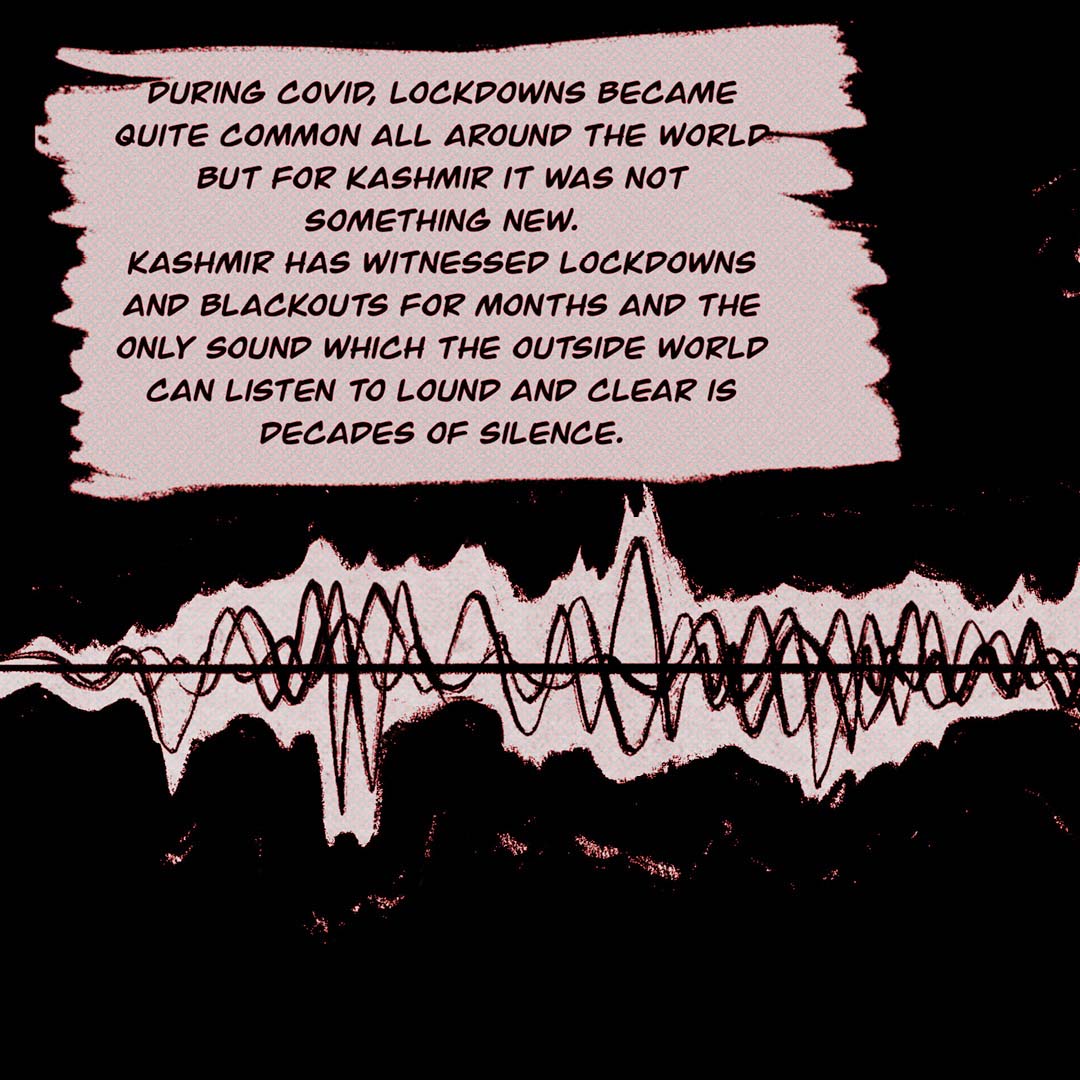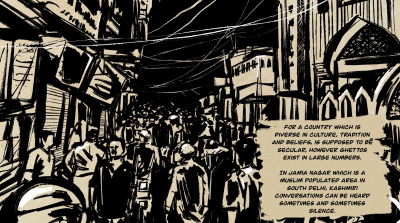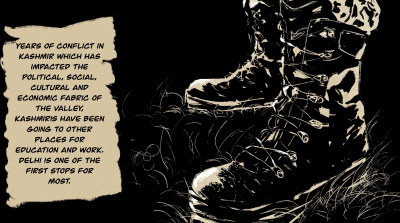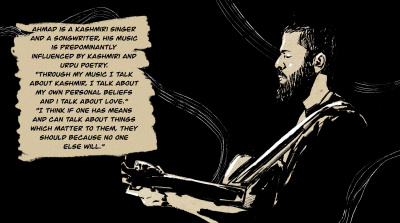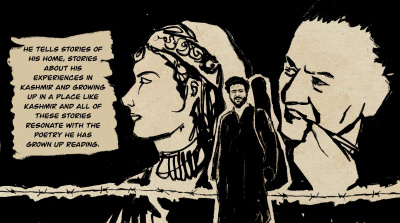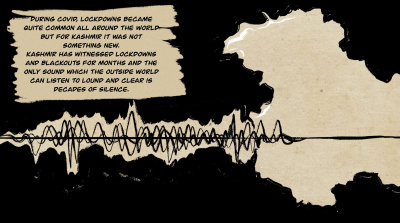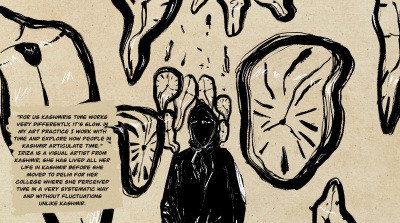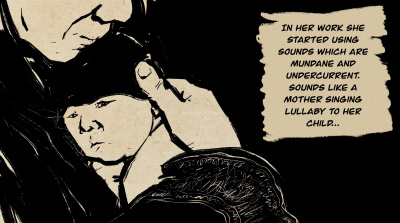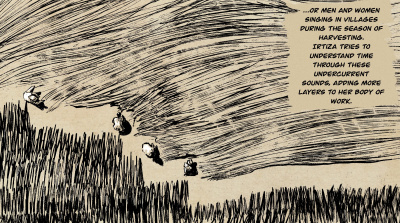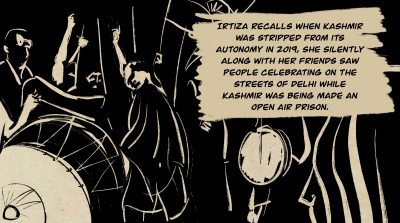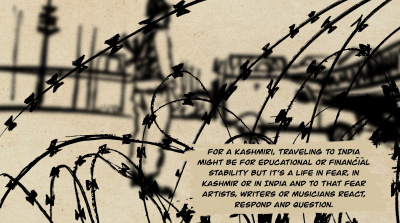Undercurrents of a Home
Anis Wani, an artist and writer from Kashmir, shares sketches of his conversations with Kashmiri musician Ahmad Parvez and visual artist Malik Irtiza, both of whom work with sound as an integral part of their practice. Having spent significant time in Delhi for work and education, and traveling across other places, they reflect on their relationship to time, home, and growing up in Kashmir amidst decades of political conflict. The graphic notes are densely packed with provocations on sound, silence, listening, their distinct vocabularies of composition, and the violence perpetuated in «city sounds».
About the Involved Artists
Ahmad Parvez is a singer-songwriter who skilfully combines elements of folk, blues, and rock with the rich tapestry of Urdu and Kashmiri poetry. Infused with a thoughtful political perspective, his music embodies the profound love and deep-rooted attachment he holds for his homeland of Kashmir.
Malik Irtiza is a visual artist whose work is situated at the intersection of artistic speculation and historical inquiry. Traversing across various media such as installation, video, sound, text, and sculpture, her work explores possibilities of looking at time and voids to articulate the questions of language, memory, everyday life, and history-writing in contested territories. She takes recourse in folklore, storytelling, myth-making, and local histories to open up discussions about fragmented time in contested territories such as Kashmir.
This graphic text is part of the virtual exhibition «Norient City Sounds: Delhi», curated and edited by Suvani Suri.
Project Assistance: Geetanjali Kalta
Graphics/Visual Design: Upendra Vaddadi, Neelansh Mittra
Audio Production: Abhishek Mathur
Video Production: Ammar
Biography
Shop

Published on September 29, 2023
Last updated on February 21, 2024
Place remains important. Either for traditional minorities such as the Chinese Lisu or hyper-connected techno producers.
About Tunisian rappers risking their life to criticize politics and musicians affirming 21st century misery in order to push it into its dissolution.
From linguistic violence in grime, physical violence against artists at the Turkish Gezi protests, and violence propagation in South African gangster rap.
Special
Snap
